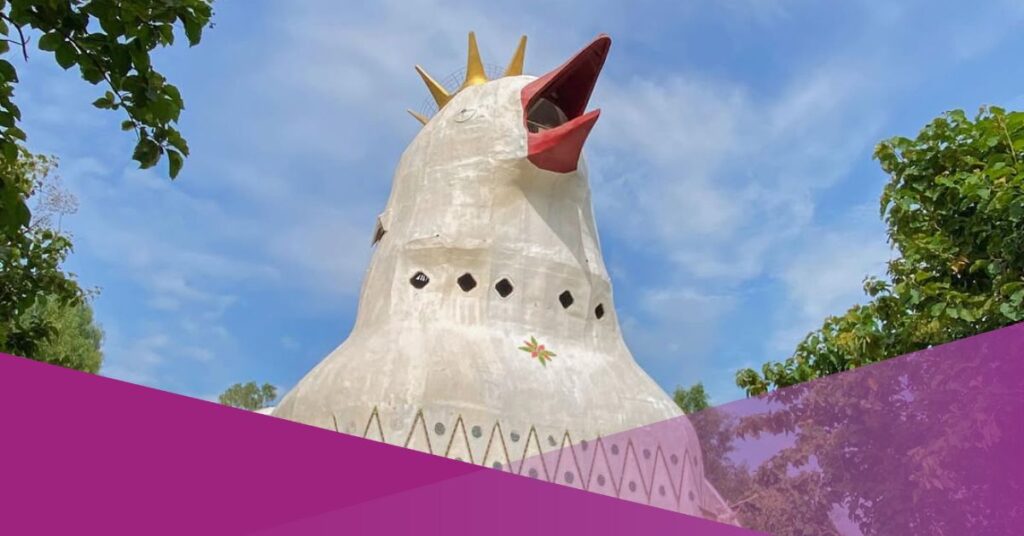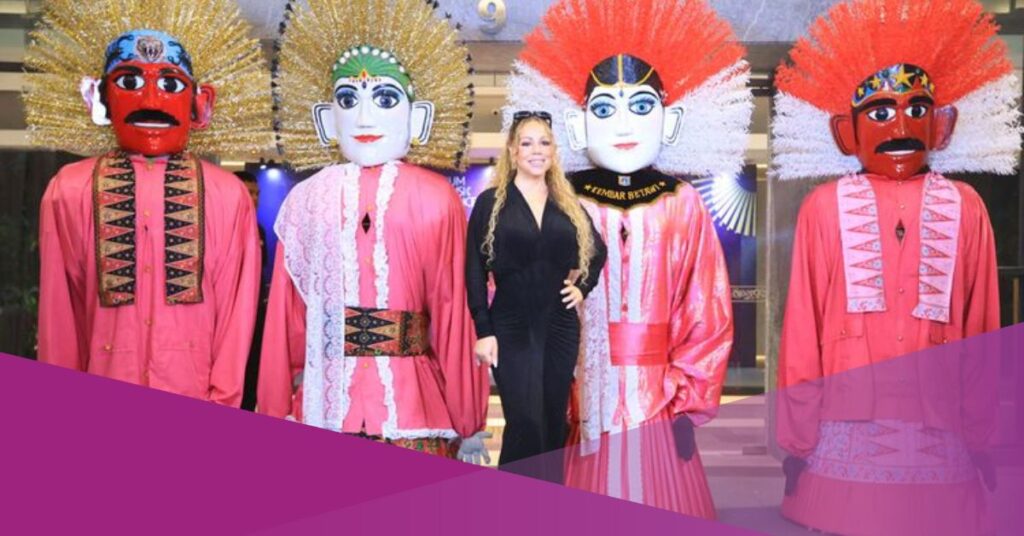Kuningan Day is a significant Bali celebration commemorating the spirits’ return to heaven following a ten-day visit to Earth during Galungan. Galungan is a Balinese holiday celebrated every 210 days to commemorate the triumph of Dharma (good) over Adharma (evil). Kuningan Day is the final day of this period and is equally significant. Balinese Hindus believe that the spirits return to heaven on this day, and they make offerings to ensure their safe journey.
The ceremony features colourful decorations, traditional dances, and a variety of religious rituals. Kuningan Day has significant cultural and religious significance for the Balinese people, highlighting the distinctive traditions that make Bali so unique.
An Overview of Kuningan Day and Galungan
The Significance of Kuningan Day
Kuningan Day is a religious holiday celebrated by Hindus in Bali, Indonesia. It marks the end of the 10-day Galungan celebration. Balinese Hindus believe that on this day, the ancestors return to visit their living relatives. They prepare food, flowers, and other gifts to welcome and honour them. Kuningan Day represents the triumph of good over evil and the harmony of heaven and earth. It is a time for prayer, reflection, and thanksgiving for the blessings bestowed by ancestors.
How is Galungan celebrated?
Galungan is a festival in Bali, Indonesia commemorates the triumph of dharma (good) over adharma (evil). The 10-day celebration is marked by colourful decorations, offerings, and traditional ceremonies. Families gather on this day to pray at temple complexes and make offerings to the gods and ancestors.
People dress up in their best traditional attire and take part in cultural activities such as traditional dances and music performances. Galungan is a festival of joy and spirituality that strengthens the bond between Balinese people and their cultural traditions.
The importance of Galungan and Kuningan in Balinese culture
Galungan and Kuningan are two important Balinese festivals. Galungan commemorates Dharma’s victory over Adharma and the return of ancestral spirits to their homes. Colourful penjor (bamboo poles decorated with offerings) are installed along streets during this ten-day celebration.
Kuningan held ten days after Galungan, is considered the festival’s pinnacle. Ancestral spirits are said to return to heaven on this day. Yellow rice offerings are made to express gratitude and bring prosperity to the household. These festivals are crucial in preserving and promoting Balinese culture and traditions.
The meaning behind the Galungan and Kuningan celebration
The Galungan and Kuningan celebration is very important in Balinese culture. Galungan celebrates the triumph of good over evil and the return of ancestors’ spirits to the earthly realm. It lasts ten days and is marked by elaborate offerings, prayers, and festivities.
Kuningan, on the other hand, is the celebration’s final day, when special offerings are made to bid farewell to the spirits of the ancestors. In Balinese belief, these two celebrations represent the never-ending cycle of life, death, and rebirth.
The Celebration of Kuningan Day
What happens on Kuningan Day?
Kuningan Day is a significant religious celebration in Bali, Indonesia. According to the Balinese calendar, it takes place every 210 days. The Balinese believe that their ancestors return to their homes on this day. Many Balinese families prepare special food, flowers, and incense to make offerings to their ancestors. Music, dance performances, and traditional ceremonies at temples across the island are also part of the festivities. Kuningan Day is a day when the Balinese people honour and thank their ancestors.
Rituals performed during the Kuningan celebration
Kuningan Day is marked by a variety of rituals that are deeply meaningful to the Balinese people. Offering prayers and blessings to ancestors and deities at temples across the island is one of the main rituals.
Gebogan, or special offerings, are meticulously prepared and presented as a symbol of gratitude and respect. Villagers also dress in traditional attire and take part in cultural performances such as traditional dances and gamelan music. This festival allows the Balinese to reconnect with their spiritual roots and honour their ancestors.
The traditional offerings made on Kuningan Day
The traditional offerings made on Kuningan Day play an important role in the Kuningan Day celebrations in Bali. People make and offer various types of “canang sari” offerings to honour their ancestors and seek blessings from the gods. These offerings are made of woven palm leaves and contain a variety of colourful flowers, fruits, rice, and other symbolic items.
Each offering is carefully arranged and placed in temples, shrines, and private residences. Making and giving these symbolic gifts is thought to bring the community prosperity, protection, and spiritual blessings.
How Balinese people decorate their houses and temples for Kuningan
The Celebration of Kuningan Day is an important religious festival for the Balinese people. During this time, they decorate their houses and temples with festive ornaments and colourful decorations.
The main symbol of Kuningan is the yellow coconut leaf which is used to craft intricate decorations such as penjor – tall bamboo poles adorned with flowers, fruits, and palm leaves. These beautiful decorations add a vibrant and joyful atmosphere to the Balinese homes and temples, creating a sense of spiritual connection and celebration.
The Significance of the Spirits’ Return to Heaven
Why do the spirits return to heaven on Kuningan Day?
On Kuningan Day, the significance of the spirits returning to heaven is deeply rooted in Balinese Hinduism. The spirits of deceased ancestors are said to visit their earthly descendants on this day. Extensive rituals, offerings, and prayers are used to welcome these spirits back.
The Balinese seek the blessings and guidance of these ancestral spirits by honouring and appeasing them. The return of the spirits to heaven represents the end of their earthly journey and the continuation of their spiritual existence in the realm of the gods.
How do Balinese people believe the spirits visit the Earth?
Balinese people believe that spirits come to Earth at auspicious times and through specific rituals. They believe that during ceremonies such as Galungan and Kuningan, which commemorate the triumph of good over evil, the spirits return to heaven.
These ceremonies are very important to the Balinese because they believe the spirits ascend to heaven during this time. The Balinese people perform elaborate rituals and offerings to ensure that the spirits have a safe and peaceful journey, expressing their deep respect and reverence for these divine beings.
Sang Hyang Widhi’s role on Kuningan Day
Sang Hyang Widhi plays an important role in Balinese Hinduism on Kuningan Day. On this day, ancestors’ spirits are believed to return to heaven after a brief visit to Earth during the Galungan period.
The Supreme God, Sang Hyang Widhi, is in charge of guiding these spirits back to their celestial abode. This day is significant culturally and spiritually because it marks the end of the ten-day Galungan festival and represents the triumph of good over evil.
The symbolic elements used to welcome the spirits back to heaven on Kuningan Day
The Balinese use various symbolic elements on Kuningan Day to welcome the spirits back to heaven. They adorn their homes with brightly coloured offerings made of palm leaves, flowers, and fruits. These offerings represent their gratitude and reverence for their ancestors.
To welcome the spirits, they also make penjor, which are long bamboo poles decorated with coconut leaves and rice stalks. These symbolic elements are significant because they demonstrate the Balinese people’s belief in the return of the spirits to heaven as well as the importance of honouring their ancestors.
The meaning of the bamboo pole on Kuningan Day
The bamboo pole is very important on Kuningan Day in Bali because it represents the spirits’ journey back to heaven. The pole is beautifully decorated with offerings and prosperity symbols. During this time, it is believed that ancestors’ spirits return to visit their families, and the bamboo pole serves as a guide for them to ascend back to the spiritual realm.
The community works together to build these poles, which represent unity and devotion to their ancestors. On Kuningan Day, the bamboo pole represents Balinese culture’s deep spiritual beliefs and respect for ancestors.
The Cultural Significance of Galungan and Kuningan
The historical background of the Galungan and Kuningan celebration
The Galungan and Kuningan celebration is a significant cultural event in Bali, Indonesia. This celebration represents the victory of Dharma (goodness) over Adharma (evil) and is rooted in Hindu mythology. According to ancient scriptures, during this period, ancestral spirits come down to earth to visit their descendants.
The celebrations include adorning temples and homes with colourful decorations, preparing special meals, and offering prayers and blessings. It is a time for the Balinese people to reconnect with their ancestors and strengthen the bond between the spiritual and earthly realms.
How do Balinese Hindu beliefs influence the celebration of Galungan and Kuningan?
The cultural significance of Galungan and Kuningan in Bali is heavily influenced by Balinese Hindu beliefs. Galungan marks the victory of dharma over adharma, where ancestral spirits return to their former homes. The celebration includes decorating homes with penjor (long bamboo poles adorned with coconut leaves and offerings), making offerings at family temples, and performing ritual dances.
Kuningan, which follows Galungan, is a time when the spirits of ancestors return to the heavens. Balinese Hindus celebrate by making unique offerings and performing religious rituals at temples, ultimately reflecting the strong influence of their religious beliefs on these festive occasions.
The main differences between Galungan and Kuningan
The Cultural Significance of Galungan and Kuningan highlights the main differences between these two important Balinese religious holidays. Galungan marks the victory of good over evil, and during this time, ancestral spirits descend to bless the land.
Kuningan, on the other hand, signifies the end of the Galungan celebration and honours the departing ancestral spirits. While both festivals involve offerings, prayers, and the participation of the local community, Galungan is a longer and more elaborate affair compared to Kuningan.
Check out the other articles to know more about Indonesia:








































